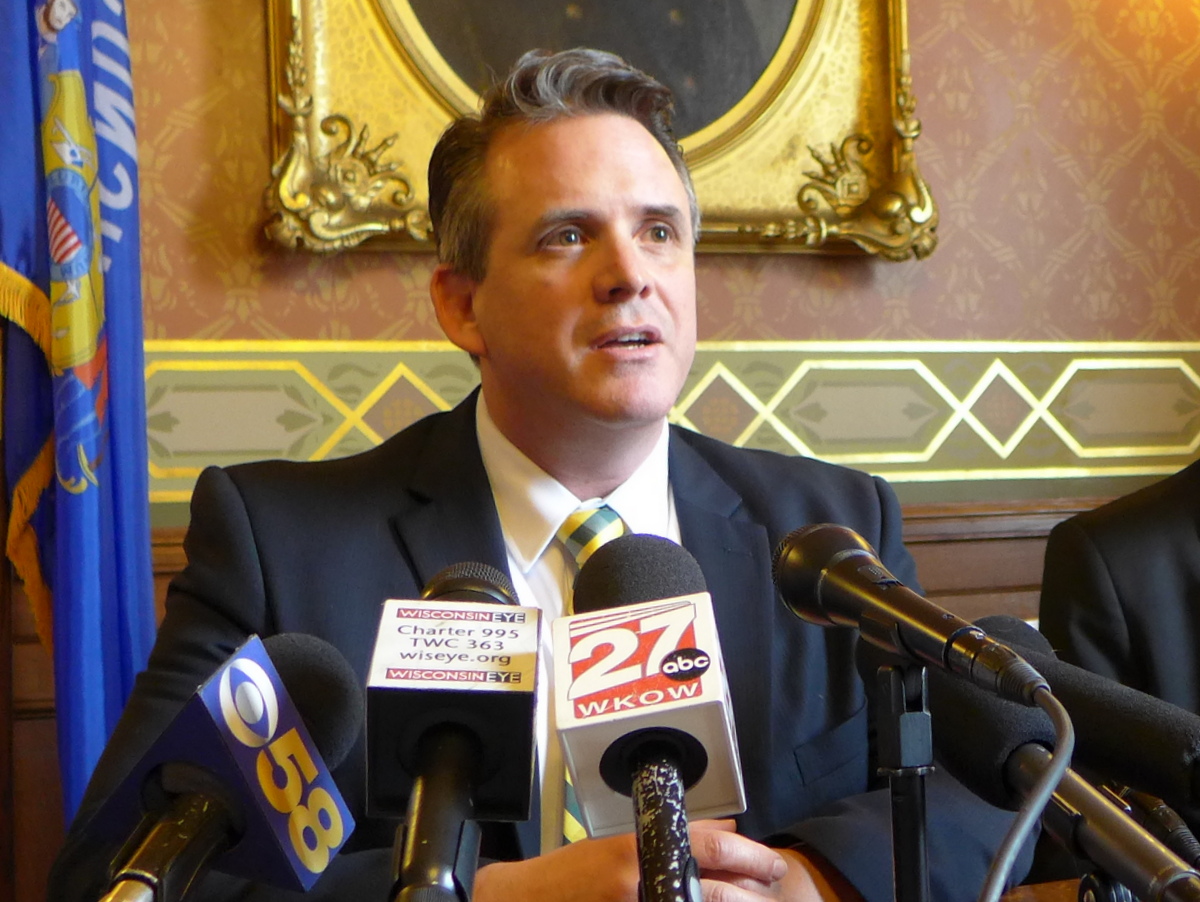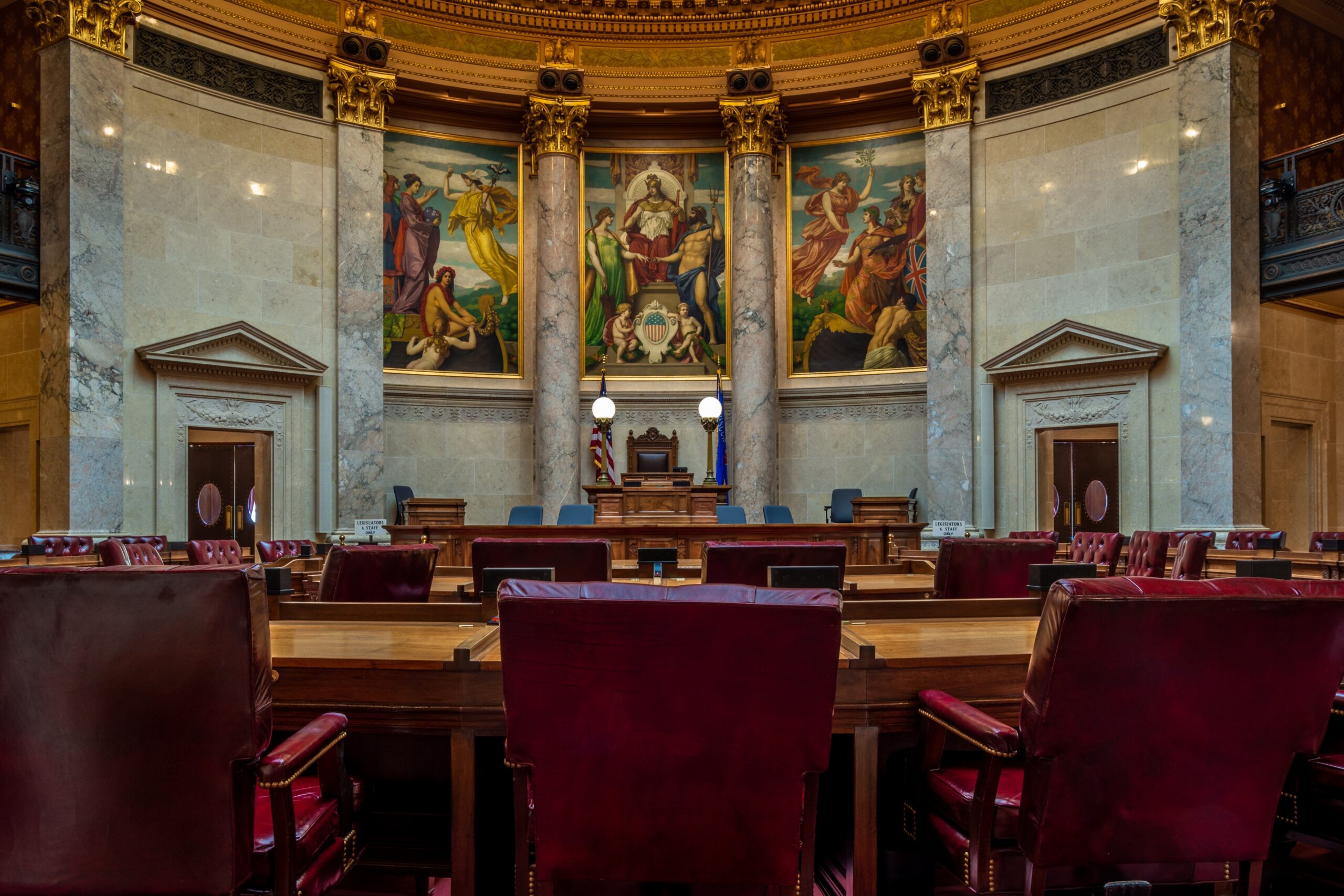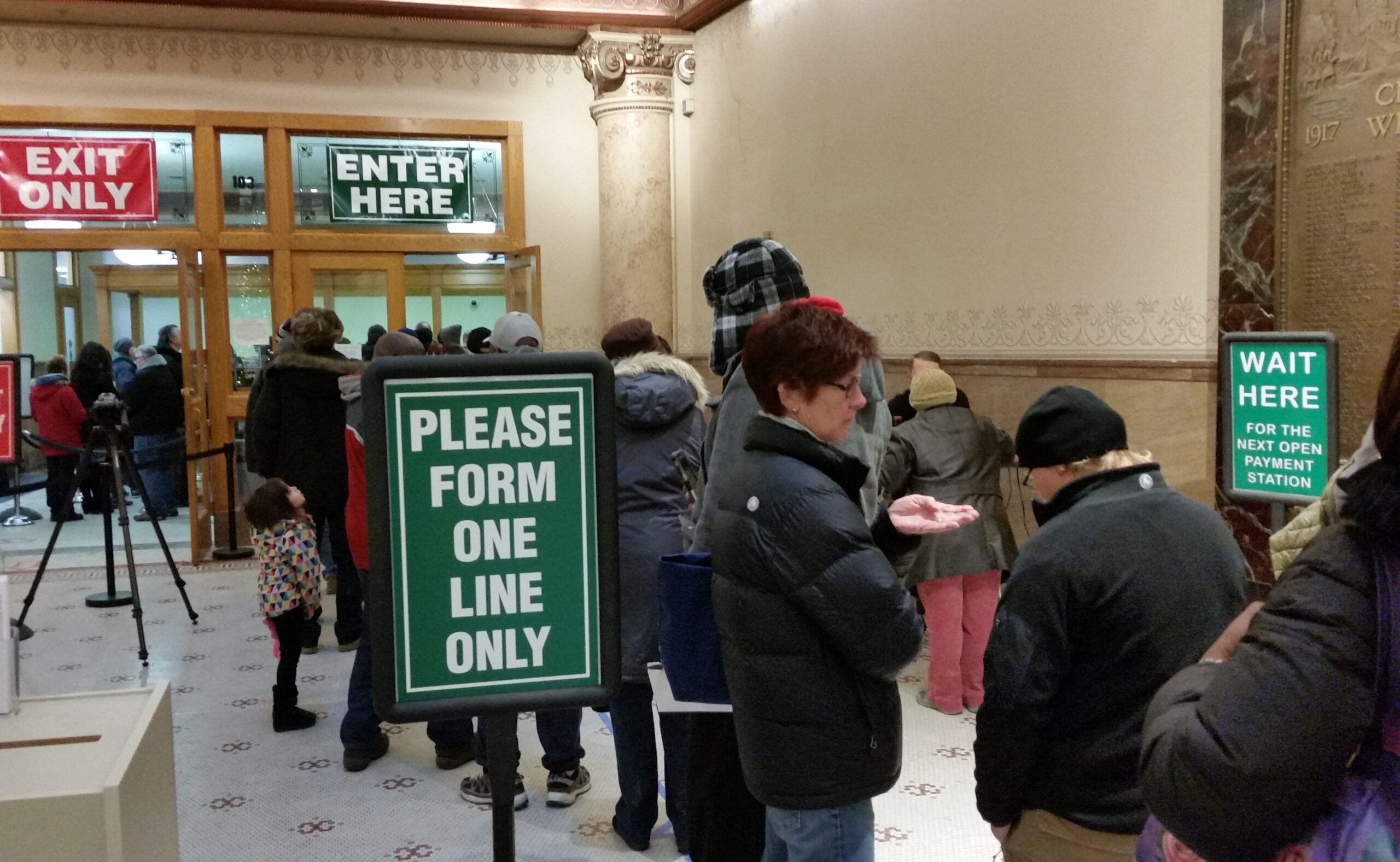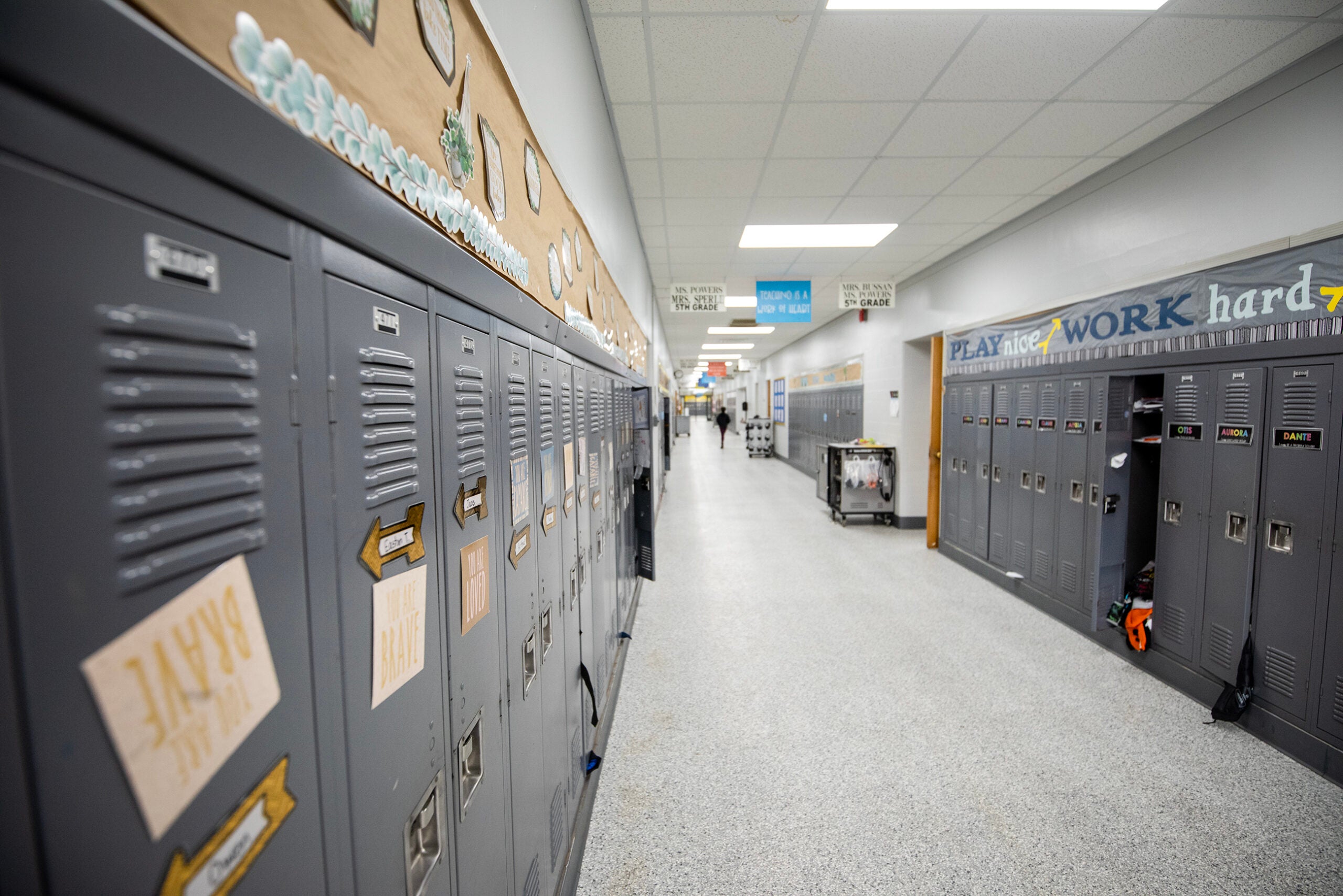A bill to cut state income taxes by over $2.9 billion and exempt retirement income from state taxation passed out of the Wisconsin state Assembly and received a public hearing in the state Senate last month.
The Republican tax cut proposal passed on a 64-35 party line vote in the Assembly, sending it to the Senate where the GOP is also in the majority. Gov. Tony Evers, a Democrat, has vowed to veto the bill if it reaches his desk.
The bill would return to taxpayers much of the $4 billion state surplus, said state Rep. David Steffen, R-Howard, author of the bill. State Sen. Rachael Cabral-Guevara, R-Appleton, is the lead sponsor of the proposal in the Senate.
News with a little more humanity
WPR’s “Wisconsin Today” newsletter keeps you connected to the state you love without feeling overwhelmed. No paywall. No agenda. No corporate filter.
“It’s the people’s money,” Steffen said on Wisconsin Public Radio’s “The Morning Show.” “They need it badly now in this inflationary environment. So doing a permanent tax cut to get it back to them makes the most sense.”
The following was edited for clarity and brevity.
Kate Archer Kent: The Legislative Fiscal Bureau estimates your proposal would lower the state’s third income tax bracket from 5.3 percent to 4.4 percent. That would save the average tax filer $772. What would a tax savings of that amount mean for the average Wisconsin taxpayer?
David Steffen: Think about all the additional expenses that a middle-class family or a fixed-income retiree will be able to address between the rising costs of heating, housing and food costs. All those things have been absolutely crushing our middle class. (Returning) $772 or more to the average taxpayer is one way to get more money in their pockets so that they can … absorb this crushing inflation we’re feeling.

KAK: Why focus on the income tax bracket that includes individuals earning about $27,000 up to $300,000?
DS: That is our largest tax bracket, as you can imagine. It encompasses the vast majority of taxpayers, 1.7 million of them, actually. Someone making $9 an hour will feel the benefit, all the way up to (people earning) $300,000 a year. Those are the lower working class as well as the upper middle class.
Second, the governor made it clear in his (proposed state) budget that he did not want any money going to the top earners, those who are making above $304,000. Our last plan had 77 percent of the tax benefit going to this middle-class bracket. We now have it designed so 100 percent of the income tax break goes entirely to that middle-class bracket. Those are the people who are supporting our economy. They are our teachers, firefighters, child care workers, as well as retirees. So it is absolutely appropriate that we give a 15 percent income tax cut to those people when we have this amount of surplus.
Let’s be clear: This isn’t our money. We’ve already set up our budget for the next two years, and we still have $4 billion left in the bank earning $1 million a month in interest.
KAK: Your plan would commit much of the state’s projected $4 billion budget surplus to tax relief. Why cut taxes rather than use this money to fund public services?
DS: When we give money to the central planners in Madison, we rarely get what we expect. The money starts at a certain point and bounces around like a Plinko chip on “The Price Is Right” through the process. Bureaucrats take their bite, and at the end of the day, no one really is sure what benefit they got.
Let’s be clear: We increased state spending by 11.7 percent with this budget. So we have juiced every entity that’s currently funded through state government. They’ve all received significant increases as a part of this budget, but now there’s still a surplus. So let’s give it back to the people.
KAK: Your plan would also cut taxes on retirement by exempting the first $100,000 from an individual’s retirement income. Also, exempt from state taxes would be the first $150,000 from the income of a couple who is 67 or older. Why include this proposal in the bill?
DS: States that have lower tax rates attract workers. We are in an extreme deficit with our workforce situation, and we need to have an environment where we are competitive with our neighbors. For example, Illinois has tax-free retirement. I want to make sure that we are not losing people to Illinois because of that difference in benefits for our retirees.
KAK: Would the retirement income exemption from state taxation help people on both fixed incomes as well as people in their highest earning years of work?
DS: Once someone turns 67, the first $100,000 for an individual, $150,000 for a couple, would be tax-exempt. So it’s all something that benefits them throughout that process. We want people to come to Wisconsin, live here, work here during their highest (earning) years so once they retire they have this benefit.
KAK: Wisconsin is trending older, as demographers have told us. Does your plan take that into account?
DS: Yes, we are becoming a grayer state. Attracting workers through more competitive, attractive tax rates is one of the ways that we can slow that curve.
Texas and Florida are states that are growing, not just with retirees, but with workers in general. And the states that have the least competitive tax environments are the ones that are losing people — California, New York and New Jersey. People are moving out of those states because of that environment. I don’t want Wisconsin to be like that. I want us to be competitive so that we can attract and retain workers who ultimately become retirees.
Wisconsin Public Radio, © Copyright 2025, Board of Regents of the University of Wisconsin System and Wisconsin Educational Communications Board.







